#Oki Koji
Explore tagged Tumblr posts
Text

Border’s pretty boys turned into cheerleaders
15 notes
·
View notes
Text

Sniper cats
93 notes
·
View notes
Text
Maori: You guys are idiots, did you know that?
Mizukami:
Oki:
Minamisawa:
Ikoma: In our own defense, we actually did know that.
#world trigger#incorrect quotes#Ikoma squad#hosei maori#mizumaki satoshi#koji oki#minamisawa kai#ikoma tatsuhito#source: ????
27 notes
·
View notes
Text


#anime#world trigger#this is so cute#chika amatori#soya kazama#shuji miwa#yosuke yoneya#toru narasaka#jun arashiyama#mitsuru tokieda#ken satori#isami toma#yuzuru ema#madoka ui#koji oki#kazuaki oji#haruaki azuma#tetsuji arafune#kotaro suwa#izuho natsume#kyosuke karasuma#akane hiura
142 notes
·
View notes
Text

おっきーの活躍もっと見たいなぁ
アニメ4期待ってます!!
36 notes
·
View notes
Text

Self indulgent doodle that’ll never be finished lol
Oki loves to tease keyoi by making him super flustered since he’s such a novice at pda keyoi is absolutely smitten with all the wotri boys
#not you queue#world trigger#fanart#keyoi#koji oki#self indulgence at its finest#I’ll eventually get to that fe3h sylveth art I wanna do#in the meantime#my art#ワールドトリガー
5 notes
·
View notes
Text
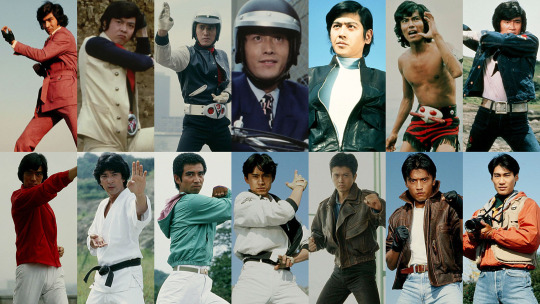
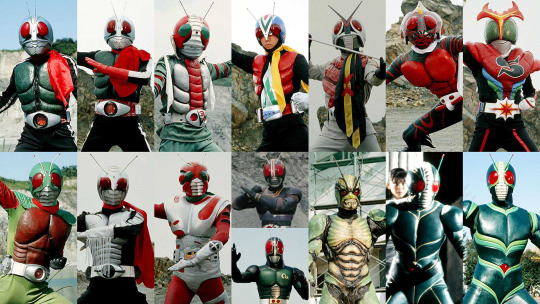
All Showa-Era Kamen Riders:
Takeshi Hongo (Kamen Rider 1)
Hayato Ichimonji (Kamen Rider 2)
Shiro Kazami (Kamen Rider V3)
Joji Yuki (Riderman)
Keisuke Jin (Kamen Rider X)
Daisuke Yamamoto (Kamen Rider Amazon)
Shigeru Jo (Kamen Rider Stronger)
Hiroshi Tsukuba (Skyrider)
Kazuya Oki (Kamen Rider Super-1)
Ryo Murasame (Kamen Rider ZX)
Kotaro Minami (Kamen Rider Black/Black RX)
Shin Kazamatsuri (Kamen Rider Shin)
Masaru Aso (Kamen Rider ZO)
Koji Segawa (Kamen Rider J)
#kamen rider#kamen rider ichigo#kamen rider nigo#kamen rider v3#riderman#kamen rider x#kamen rider amazon#kamen rider stronger#kamen rider skyrider#kamen rider super 1#kamen rider zx#kamen rider black#kamen rider black rx#kamen rider shin#kamen rider zo#kamen rider j#masked rider
121 notes
·
View notes
Text
Seasons of Kamen Rider Where a Rider’s Actor Sang a Song
1971
Hiroshi Fujioka (Takeshi Hongo) sings the first opening for Kamen Rider - Let’s Go! Rider Kick!
1973
Hiroshi Miyauchi (Shiro Kazami) sings the opening for Kamen Rider V3 - Tatakae! Kamen Rider V3
1980
Shunsuke Takasugi (Kazuya Oki) sings the opening for Kamen Rider Super-1 - Kamen Rider Super-1
Shunsuke Takasugi (Kazuya Oki) sings the first ending song for Kamen Rider Super-1 - Hi o Fuke Rider Ken
1987
Tetsuo Kurata (Kohtaro Minami) sings the opening for Kamen Rider Black - Kamen Rider Black
Tetsuo Kurata (Kohtaro Minami) sings the ending theme for Kamen Rider Black: Hurry to Onigashima - Ore no Seishun
1988
Tetsuo Kurata (Kohtaro Minami) sings an insert theme for Kamen Rider Black RX - Kuroi Yuusha
2002
Satoshi Matsuda (Ren Akiyama) sings an insert theme for Kamen Rider Ryuki - Lonely Soldier
Ryohei Odai (Shuichi Kitaoka) duets with Tomohisa Yuge (Goro Yura) for an insert theme for Kamen Rider Ryuki - Dear Friend
Ryohei Odai (Shuichi Kitaoka) sings an insert theme for Kamen Rider Ryuki - Kienai Niji
Takashi Hagino (Takeshi Asakura) sings an insert theme for Kamen Rider Ryuki - Spinnin’ Around
2003
Masayuki Izumi (Yuji Kiba) sings an insert theme for Kamen Rider Faiz - Cross a river
Mitsuru Karahashi (Naoya Kaido) sings an insert theme for Kamen Rider Faiz - Yume No Kakera ~ Romantico
Yuria Haga (Smart Queen) sings an insert theme for Kamen Rider Faiz - I wish
Yuria Haga (Smart Queen) duets with Yoshika Kato for an insert theme for Kamen Rider Faiz - Taiyou no Kage Tsuki no Yoru
Ken Mizorogi (Keitaro Kikuchi) sings an insert song for Kamen Rider Faiz - Hang on
In 2018, Kento Handa (Takumi Inui) and Kohei Murakami (Masato Kusaka) sing a cover of the opening for Kamen Rider Faiz - Justifaiz
In 2020, Kohei Murakami (Masato Kusaka) sings a cover of an insert song for Kamen Rider Faiz - Existence ~KAIXA-nized dice
In 2020, Kohei Murakami (Masato Kusaka) sings a cover of an insert song for Kamen Rider Faiz - Red Rock
In 2023, Kohei Murakami (Masato Kusaka) duets with Masahiro Inoue (Tsukasa Kadoya) for a cover of the opening for Kamen Rider Faiz - Jusitfaiz - Kaixa Day Ver.
2004
Kousei Amano (Sakuya Tachibana) sings an insert theme for Kamen Rider Blade - Rebirth
Ryoji Morimoto (Hajime Aikawa) sings an insert theme for Kamen Rider Blade - Take it A Try
Takayuki Tsubaki (Kazuma Kenzaki) sings an insert theme for Kamen Rider Blade - Wanna Be Strong
Takayuki Tsubaki (Kazuma Kenzaki) duets with Terunosuke Takezai for an insert theme for Kamen Rider Blade - Shout it Out
Takahiro Hojo (Mutsuki Kamijo) sings an insert theme for Kamen Rider Blade - Hero
2006
Yuki Sato (Arata Kagami) sings alongside RIDER CHIPS for an insert theme for Kamen Rider Kabuto - LORD OF THE SPEED
2007
Toshihiko Seki (Momotaros), Koji Yusa (Urataros), Masaki Terasoma (Kintaros) and Kenichi Suzumura (Ryutaros) all sing the second opening for Kamen Rider Den-O - Climax JUMP Den-LINER Form
Takeru Satoh (Ryotaro Nogami) duets with Toshihiko Seki (Momotaros) for an insert theme for Kamen Rider Den-O - Double-Action Sword Form
Takeru Satoh (Ryotaro Nogami) duets with Koji Yusa (Urataros) for an insert theme for Kamen Rider Den-O - Double-Action Rod Form
Takeru Satoh (Ryotaro Nogami) duets with Masaki Terasoma (Kintaros) for an insert theme for Kamen Rider Den-O - Double-Action Ax Form
Takeru Satoh (Ryotaro Nogami) duets with Kenichi Suzumura (Ryutaros) for an insert theme for Kamen Rider Den-O - Double-Action Gun Form
Takeru Satoh (Ryotaro Nogami) duets with Shin-ichiro Miki (Sieg) for an insert theme for Kamen Rider Den-O - Double-Action Wing Form
Toshihiko Seki (Momotaros), Koji Yusa (Urataros), Masaki Terasoma (Kintaros), Kenichi Suzumura (Ryutaros) and Hochu Otsuka (Deneb) all sing an insert theme for Kamen Rider Den-O - Double-Action Climax Form
Dori Sakurada (Kotaro Nogami) duets with Daisuke Ono (Teddy) for an insert theme for Kamen Rider Den-O - Double-Action Strike Form
Hiroyuki Watanabe (Gaoh) sings an insert theme for Kamen Rider Den-O: Ore Tanjou! - Double-Action Gaoh Form
Yuuichi Nakamura (Yuto Sakurai) duets with Hochu Otsuka (Deneb) for an insert theme from Kamen Rider Den-O - Action-ZERO
Takeru Satoh (Ryotaro Nogami) sings an insert theme for Kamen Rider Den-O - Real-Action
In 2010, Yuuichi Nakamura (Yuto Sakurai) duets with Hochu Otsuka (Deneb) for the opening for Chou Den-O Episode Red: Zero no Star Twinkle - Action-ZERO 2010
2008
The band TETRA-FANG is created to create music for Kamen Rider Kiva, with Koji Seto (Wataru Kurenai) on vocals
TETRA-FANG performs an insert theme for Kamen Rider Kiva - Destiny’s Play
TETRA-FANG performs an insert theme for Kamen Rider Kiva - Individual-System
TETRA-FANG performs an insert theme for Kamen Rider Kiva - Shout in the Moonlight
TETRA-FANG performs an insert theme for Kamen Rider Kiva - Innocent Trap
TETRA-FANG performs an insert theme for Kamen Rider Kiva - Supernova
TETRA-FANG performs an insert theme for Kamen Rider Kiva - Roots of the King
TETRA-FANG performs an insert theme for Kamen Rider Kiva - Silent Shout
TETRA-FANG performs an insert theme for Kamen Rider Kiva - Message
TETRA-FANG performs an insert theme for Kamen Rider Kiva - Rainy Rose
TETRA-FANG performs an insert theme for Kamen Rider Kiva - Exterminate Time
TETRA-FANG performs an insert theme for Kamen RIder Kiva - Eternity Blood
TETRA-FANG performs an insert theme for Kamen Rider Kiva - No Matter Who You Are
TETRA-FANG performs an insert theme for Kamen Rider Kiva - Prayer~Message 2
TETRA-FANG performs an insert theme for Kamen Rider Kiva - Beginning~Message 3
TETRA-FANG performs an insert theme for Kamen Rider Kiva - Mind Garden
TETRA-FANG performs an insert theme for Kamen Rider Kiva - Lightning to Heaven
Koji Seto (Wataru Kurenai) is a featuring artist with Crimson-Fang, singing an insert theme for Kamen Rider Kiva - With you
Keisuke Kato (Keisuke Nago) sings an insert theme for Kamen Rider Kiva - Fight for Justice
Keisuke Kato (Keisuke Nago) sings an insert theme for Kamen Rider Kiva - Don’t Lose Yourself
Kouhei Takeda (Otoya Kurenai) sings an insert theme for Kamen Rider Kiva - This love never ends
Yu Takahashi (Yuri Aso) duets with Nana Yanagisawa (Megumi Aso) for an insert theme for Kamen Rider Kiva - Feel the same
Keisuke Kato (Keisuke Nago) sings an insert theme for Kamen Rider Kiva - IXA-cise
Kenji Matsuda (Jiro) sings an insert theme for Kamen Rider Kiva - Keep alive
Yu Takahashi (Yuri Aso), Kouhei Takeda (Otoya Kurenai), Nana Yanagisawa (Megumi Aso) and Keisuke Kato (Keisuke Nago) all sing an insert theme for Kamen Rider Kiva - Inherited-System
2009
Masahiro Inoue (Tsukasa Kadoya) sings an insert theme for Kamen Rider Decade - Ride the Wind
Kimito Totani (Daiki Kaito) sings an insert theme for Kamen Rider Decade - Treasure Sniper
In 2021, Masahiro Inoue (Tsukasa Kadoya) covers the opening of Kamen Rider Decade - Journey Through the Decade
In 2021, Masahiro Inoue (Tsukasa Kadoya) duets with So Okuno (Sougo Tokiwa) on the ending theme of Rider Time: Kamen Rider Decade vs. Zi-O - Decade Mansion’s Death Game - INSIDE-OUT Decade ver.
Koji Kikkawa (Sokichi Narumi) sings an insert theme for Kamen Rider W - Nobody’s Perfect
Renn Kiriyama (Shotaro Hidari) and Masaki Suda (Philip) perform an in-universe cover of an insert theme for Kamen Rider W - Finger on the Trigger
Mitsuru Matsuoka (Katsumi Daido) sings the ending theme for Kamen Rider W Forever: A to Z/The Gaia Memories of Fate - W
Mitsuru Matsuoka (Katsumi Daido) sings the ending theme for Kamen Rider W Returns: Kamen Rider Eternal - cod E ~E no Angou
Mitsuru Matsuoka (Katsumi Daido) with Koji Kikkawa (Sokichi Narumi) for the chorus sings the ending theme for Fuuto PI - Tsumi to Batsu to Underground
2010
Shu Watanabe (Eiji Hino) sings alongside Maki Oguro for the opening for Kamen Rider OOO - Anything Goes! Special Edit
Shu Watanabe (Eiji Hino) sings an insert theme for Kamen Rider OOO - Regret Nothing ~ Tighten Up
Shu Watanabe (Eiji Hino) sings an insert theme for Kamen Rider OOO - Got to Keep It Real
Shu Watanabe (Eiji Hino) sings an insert theme for Kamen Rider OOO - Ride On Right Time
Shu Watanabe (Eiji Hino) sings an insert theme for Kamen Rider OOO - Sun Goes Up
Shu Watanabe (Eiji Hino) duets with Ryosuke Miura (Ankh) for an insert theme of Kamen Rider OOO - Time Judged All
Shu Watanabe (Eiji Hino) sings an insert theme for Kamen Rider OOO - Shout Out
Shu Watanabe (Eiji Hino) duets with Akira Kushida for an insert theme of Kamen Rider OOO - Power to Tearer
Hiroaki Iwanaga (Akira Date) duets with Asaya Kimijima (Shintaro Goto) for an insert theme of Kamen Rider OOO - Reverse/Re:birth
Shu Watanabe (Eiji Hino) and Ryosuke Miura (Ankh) sing alongside Ken Matsudaira for the ending theme of Kamen Rider OOO Wonderful: the Shogun and 21 Core Medals - Ole! Te wo Tsunagou
In 2019, Shu Watanabe (Eiji Hino) duets with Ryosuke Miura (Ankh) for an insert theme of Kamen Rider Heisei Generations Final: Build & Ex-Aid with Legend Riders - Time Judged All ~ 8 Years Later
2013
Gaku Sano (Kouta Kazuraba) sings an insert theme of Kamen Rider Gaim - Rise Up Your Flag
Yutaka Kobayashi (Kaito Kumon) sings an insert theme of Gaim Gaiden: Kamen Rider Baron - Unperfected World
Mahiro Takasugi (Mitsuzane Kureshima) sings an insert theme of Kamen Rider Gaim - Point of No Return
Gaku Sano (Kouta Kazuraba) duets with Yutaka Kobayashi (Kaito Kumon) for an insert theme of Kamen Rider Gaim - Ranbu Escalation
Yutaka Kobayashi (Kaito Kumon) sings alongside Gaku Matsuda (Zack) and Saku Momose (Peko) for an insert theme for Kamen Rider Gaim - Never Surrender
Yutaka Kobayashi (Kaito Kumon) sings alongside Gaku Matsuda (Zack) and Saku Momose (Peko) for an insert theme for Gaim Gaiden: Kamen Rider Knuckle - Dance With Me
2014
Mitsuru Matsuoka (Yongo) sings the opening for Kamen Rider Drive - SURPRISE-DRIVE
Ryoma Takeuchi (Shinnosuke Tomari) sings alonside Yuu Inaba (Go Shijima) and Taiko Katono (Chase) for an insert theme of Kamen Rider Drive - Spinning Wheel
Mitsuru Matsuoka (Yongo) sings the ending theme for D-Video Special: Kamen Rider Yongo - time
Mitsuru Matsuoka (Yongo) sings the ending theme for Kamen Rider Drive: Surprise Future - re-ray
Mitsuru Matsuoka (Yongo) sings the ending theme for Kamen Rider Drive Saga: Kamen Rider Chaser - good bye little moon
Mitsuru Matsuoka (Yongo) sings the ending theme for Kamen Rider Drive Saga: Kamen Rider Mach and Kamen Rider Heart - eternity (~from SURPRISE-DRIVE)
2016
Ruka Matsuda (Poppy Pipopapo) sings an insert theme for Kamen Rider Ex-Aid - Pinple Pell
Ruka Matsuda (Poppy Pipopapo) sings an insert theme for Kamen Rider Ex-Aid - PEOPLE GAME
Ruka Matsuda (Poppy Pipopapo) sings the ending song for Kamen Rider Ex-Aid Trilogy: Another Ending - Para-DX and Poppy - Real Heart
Hiroyuki Takami (Masamune Dan) sings an insert theme for Kamen Rider Ex-Aid - JUSTICE
Hiroyuki Takami (Masamune Dan) sings an insert theme for Kamen Rider Ex-Aid - Wish in the dark
Hiroyuki Takami (Masamune Dan) sings the theme song for Kamen Rider Ex-Aid Trilogy: Another Ending - Genm vs. Lazer - Believer
Hiroyuki Takami (Masamune Dan) sings the theme song for Kamen Rider Genms - The Presidents - GAME CHANGER
2018
ISSA (SOUGO) is a featuring artist on Shuta Shueyoshi of AAA, singing the opening for Kamen Rider Zi-O - Over “Quartzer”
So Okuno (Sougo Tokiwa) sings an insert theme for Kamen Rider Zi-O - Zi-O, Toki no Ouja
Gaku Oshida (Geiz Myokoin) sings an insert theme for Kamen Rider Zi-O - FUTURE GUARDIAN
Keisuke Watanabe (Woz/White Woz) sings an insert theme for Kamen Rider Zi-O - Black&White
Shieri Ohata (Alpina Tsukuyomi) sings alongside Kamen Rider Girls an insert theme for Kamen Rider Zi-O - Tsuki no Michiru Toki
Hideya Tawada (Rentaro Kagura) sings alongside Sakuramen for the opening for Rider Time: Kamen Rider Shinobi - IZANAGI
ISSA (SOUGO) sings alongside Masayuki Tanaka, Shinichi Ishihara, Rica Matsumoto, Nanase Aikawa, Akira Fuse, YU-KI, AAA, Tourbillon, Gackt, Aya Kamiki, Takuya, Maki Oguro, Anna Tsuchiya, Shou Kiryuuin, Shonen no Kaze, Mitsuru Matsuoka, Kishidan, Daichi Miura and Beverly for the opening for Kamen Rider Heisei Generations Forever - Kamen Rider Heisei Generations Forever Medley D.A. Re-Build Mix
In 2021, So Okuno (Sougo Tokiwa) duets with Masahiro Inoue (Tsukasa Kadoya) for the ending theme of Kamen Rider Zi-O vs. Decade - 7 of Zi-O! - INSIDE-OUT Zi-O ver.
2019
Manyard and Blaise Plant (MetsubouJinrai), the lead singers of MONKEY MAJIK, sing the ending theme of Zero-One Others: Kamen Rider MetsubouJinrai - S.O.S.
Manyard and Blaise Plant (MetsubouJinrai), the lead singers of MONKEY MAJIK, sing the ending theme of Zero-One Others: Kamen Rider Vulcan and Valkyrie - Frontier
2020
Syuichiro Naito (Touma Kamiyama), Takaya Yamaguchi (Rintaro Shindo) and Ryo Aoki (Kento Fukamiya) all sing an insert theme for Kamen Rider Saber - Rewrite the Story
Rina Chinen (Sophia) sings an insert theme for Kamen Rider Saber - Story never ends
Syuichiro Naito (Touma Kamiyama), Takaya Yamaguchi (Rintaro Shindo) and Ryo Aoki (Kento Fukamiya) sing alongside Asuka Kawazu for the ending theme of Kamen Rider Saber: Trio of Deep Sin - Bittersweet
Robin Furuya (Storious) sings alongside Kairu Takano and Koji Saikawa for an insert theme for Kamen Rider Saber - Rock Scissors Paper
2021
Subaru Kimura (Vice) is a featuring artist on Da-iCE, singing the opening for Kamen Rider Revice - liveDevil
Kentaro Maeda (Ikki Igarashi), Wataru Hyuga (Daiji Igarashi) and Ayaka Imoto (Sakura Igarashi) with backing vocals by Subaru Kimura (Vice) sing an insert theme for Kamen Rider Revice - Go with the flo
Kentaro Maeda (Ikki Igarashi) and Subaru Kimura (Vice) sing an insert theme for Kamen Rider Revice - VOLCANO
Kentaro Maeda (Ikki Igarashi) duets with Junya Komatsu (Hiromi Kadota) for the ending theme of Kamen Rider Revice the Mystery - Without You
Junya Komatsu (Hiromi Kadota) sings the ending theme for Kamen Rider Revice: Dear GAGA - Without You Dear GAGA ver.
Wataru Hyuga (Daiji Igarashi/Kagerou) sings an insert theme of Kamen Rider Revice - Mirage Mirror
Ayaka Imoto (Sakura Igarashi) duets with Miku Ito (Lovekov) for an insert theme of Kamen Rider Revice - Cherry-ish!
Subaru Kimura (Vice) sings an insert theme for Kamen Rider Revice - #GekiyaVice
Hikari Kabashima (Hana Natsuki) sings the ending theme of Kamen Rider Jeanne and Kamen Rider Aguilera With Girls Remix - Riot in bloom
Subaru Kimura (Vice) is a featuring artist on Da-iCE, singing the ending theme for Kamen Rider Revice: Battle Familia - Dance Dance
Noritaka Hamao (George Karizaki) sings an insert theme for Kamen Rider Revice - George Karizaki’s Rider System
Noritaka Hamao (George Karizaki) sings an insert theme for Kamen Rider Revice - George Karizaki’s Rider System Dark ver.
Kentaro Maeda (Ikki Igarashi) sings an insert theme for Kamen Rider Revice - Kimi wa Sono Mama de
Wataru Hyuga (Daiji Igarashi/Kagerou) duets with Junya Komatsu (Hiromi Kadota) for the opening theme for Kamen Rider Revice Forward: Kamen Rider Live & Evil & Demons - Come alive
Kentaro Maeda (Ikki Igarashi), Wataru Hyuga (Daiji Igarashi/Kagerou), Ayaka Imoto (Sakura Igarashi), Junya Komatsu (Hiromi Kadota), Hayata Seki (Olteca), Kurodo Hachijoin (Go Tamaki), Hikari Kabashima (Hana Natsuki) and Noritaka Hamao (George Karizaki) all sing the ending theme for Kamen Rider Revice Forward: Kamen Rider Live & Evil & Demons - Love yourself
Noritaka Hamao (George Karizaki) duets with Hayata Seki (Olteca) for an ending theme for Kamen Rider Juuga VS Kamen Rider Olteca - Itoshi no Frenemy
2022
Hideyoshi Kan (Ace Ukiyo) sings an insert theme for Kamen Rider Geats - Star of the Stars of the Stars
Ryuga Sato (Keiwa Sakurai) sings an insert theme for Kamen Rider Geats - I Peace
Yuna Hoshino (Neon Kurama) sings an insert theme for Kamen Rider Geats - Beat of My Life
Kazuto Mokudai (Michinaga Azuma) sings an insert theme for Kamen Rider Geats - Undead Fire
Hideyoshi Kan (Ace Ukiyo) duets with Fuku Suzuki (Ziin) for an insert theme for Kamen Rider Geats - Live for the moment
Weather Hearts, which has Tsubasa Sakiyama (Win Hareruya) and Kaname Futaba (Hiroki Amamiya) on vocals, performs an insert theme for Geats Extra: Kamen Rider PunkJack - ROLLIN’ ROLLIN’ PUNK KING
Ryo Kitamura (Niram) sings an insert theme for Kamen Rider Geats - Non-fiction
Kazuto Mokudai (Michinaga Azuma), Ayaka Namiki (Beroba), Dai Goto (Daichi Isuzu) and Shihou Harumi all sing an insert theme for Kamen Rider Geats - Odds n’ Ends
Ryuga Sato (Keiwa Sakurai) duets with Hideya Tawada (Rentaro Kagura) for the opening theme for Geats Extra: Kamen Rider Tycoon Meets Kamen Rider Shinobi - IZANAGI Geats ver.
Ryuga Sato (Keiwa Sakurai) sings an insert theme for Kamen Rider Geats - IZANAGI - Ballad Version
Hideyoshi Kan (Ace Ukiyo), Ryuga Sato (Keiwa Sakurai), Yuna Hoshino (Neon Kurama) and Kazuto Mokudai (Michinaga Azuma) all sing alongside Kokoro Aoshima for the opening theme for Kamen Rider Geats: Jyamato Awakening - CREATORs
2023
Junsei Motojima (Houtarou Ichinose), Reiyo Matsumoto (Rinne Kudo/Mercurin/Daybreak The Sun), Yasunari Fujibayashi (Spanner Kurogane/Jupitta), Oto Abe (Kinkiravina), Rikia Tomizono (Sabimaru Tsuruhara/Televi), Alisa Sakamaki (Lachesis/Buglesia), Kanon Miyahara (Clotho/Vanfenrir), Rikuto Kumaki (Minato/Sayzombie) and Amon Kabe (Firemars) sing alongside Saki Fukuda and BACK-ON for the opening of Kamen Rider Gotchard - CHEMY × STORY - Gotcha Version
Jyutaro Yamanaka (Zukyumpire) sings an insert theme for Kamen Rider Gotchard - Kimi ni Zukkyun
Seiichiro Nagata (Houou Kaguya Quartz) sings an insert theme for Kamen Rider Gotchard - Living Legend
Junsei Motojima (Houtarou Ichinose), Reiyo Matsumoto (Rinne Kudo/Mercurin/Daybreak The Sun), Rikiya Tomizono (Sabimaru Tsuruhara/Televi) and Oto Abe (Kinkiravina) all sing an insert theme for Kamen Rider Gotchard - Gotcha! Let’s Go!
Yasunari Fujibayashi (Spanner Kurogane/Jupitta) sings alongside Saki Fukuda for an insert theme for Kamen Rider Gotchard - Blaze up
Rikuto Kumaki (Minato/Sayzombie) sings an insert theme for Kamen Rider Gotchard - One Hint
Junsei Motojima (Houtarou Ichinose) sings an insert theme for Kamen Rider Gotchard - Dream Hoper
Alisa Sakamaki (Lachesis/Buglesia) sings an insert theme for Kamen Rider Gotchard - Sunao ni I love you O
Kanji Ishimaru (Fuuga Kudo) sings an insert theme for Kamen Rider Gotchard - Kaze no Shugousha
Itono Okita (Atropos), Kanon Miyahara (Clotho/Vanfenrir) and Alisa Sakamaki (Lachesis/Buglesia) sing an insert theme for Kamen Rider Gotchard - CRY SIS
Kenta Kamakari (Geryon) sings an insert theme for Kamen Rider Gotchard - God’s Rain
DAIGO (Future Houtarou) sings a song for Kamen Rider Gotchard: The Future Daybreak - THE SUN
2024
Koukei Sakurai (Gochizos) and Ayu Shouji (Gochizos) perform backing vocals for an insert theme of Kamen Rider Gavv - EAT ME!
#kamen rider#tokusatsu#music#japanese songs#songs#insert song#kamen rider ichigo#kamen rider v3#kamen rider super-1#kamen rider black#kamen rider black rx#kamen rider ryuki#kamen rider faiz#kamen rider blade#kamen rider kabuto#kamen rider den-o#kamen rider kiva#kamen rider decade#kamen rider w#kamen rider ooo#kamen rider gaim#kamen rider drive#kamen rider ex-aid#kamen rider zi-o#kamen rider zero one#kamen rider saber#kamen rider revice#kamen rider geats#kamen rider gotchard#kamen rider gavv
252 notes
·
View notes
Text
did heath (i think thats his name. He narrates the audio books) like have a cold while doing this chapter?? It sounds like ever so slightly off. Its so weird. It doesnt sound bad but its different in a way thats so slight its disconcerting. I think it was just ch 19?? It was kinda weird. Either that or i got used to it & hes just trying out a new style.
GORDON WATCHING MOVIES WITH JASON IS SOOOO CUTE
whats so interesting is that after landamire vane, jason hasnt felt the same revulsion to killing since. And that worries him (which it should, i think), & i kinda hope that he does make the effort to stop killing people, not because i need all of my characters to be pristine bastions of moral goodness, but because i think he would feel better about himself & who hes becoming if he did that. Love vermillion btw. Hes great.
jace is absolutely named after jason & thats adorable.
emi & jason so similar it hurts
jasons family is great.
3 uncles. 2 paternal. 1 maternal.
tobio & koji = cousins from uncle shiro. Great aunt marjorie. gary canonically gives great hugs. Love that.
i wonder if jasons obsession with food & cooking partially stems from a need to connect with his sister who was so far away &/or its just a big part of his life
wally & his hubby!! #3!!
ian & erica r adorable & i love them.
i think heath (actually maybe its keith??) is talking like that because jasons voice is now deeper & resonating. That is how kheith is talking now, so that could be it. Also love that ian describes it as sexy.
ken saying that he “only gets more handsome with age” really reminds me of jason. I wonder if he got the self-aggrandizing about his looks from his dad.
Okie dokie! As always, pls no spoilers!
11 notes
·
View notes
Text
Nampō Roku, Book 7 (80): Concerning Lord Hino’s¹ Use of Kayari [蚊遣]² in the Roji.

80) Concerning [his connection with] Rikyū-koji, Hino Terusuke had become his disciple, and [they] frequently visited [each other]³.
On an evening in the summer, [Terusuke] set up a kayari-bi [蚊遣火] in his garden, in the shade under the trees⁴. When [Ri]kyū saw this [he said] “indeed, isn’t that most tasteful!” -- he was deeply moved⁵.
Since then [it has become the practice that], in a secluded place in the roji [and] near the koshi-kake, in a suitable place in the shade under the trees, the kayari should be set to smoldering [in order to keep the area free of mosquitoes]⁶.
_________________________
◎ The toku-shu shahon version of this entry agrees with the Enkaku-ji manuscript. However, according to both Tanaka Senshō and Shibayama Fugen -- and rather curiously -- the genpon text substitutes the name of Lord Asukai [飛鳥井殿] (perhaps Asukai Masakata [飛鳥井雅賢; 1585 ~ 1626], who held the lower grade of the junior fourth rank, and was Sakon-e no shosho [左近衛少将], equivalent to lieutenant-general of the Sakon [Left] Guards unit) for that of Hino Terusuke [日野輝資; 1555 ~ 1623]. This is strange because, while Lord Hino is known to have been a disciple of Rikyū (he is mentioned several times in the Nampō Roku in this capacity), a connection between Rikyū and Lord Asukai is less well documented*. ___________ *In 1609, Asakai Masakata was exiled to Naka-no-shima [中之島] in Oki [隠岐] (a group of islands northwest of the border between Tottori and Shimane Prefectures) on account of having seduced one of the emperor’s ladies-in-waiting. Masakata died in exile later in 1626.
Masakata is not recorded to have had any interest in chanoyu, and there does not appear any other reason to associate Masakata with Rikyū.
The Asakai family was established during the Heian period, but they were always more closely associated with waka [和歌] and kemari [蹴鞠] than with other cultural activities. (Kemari, which appeared in something resembling its present form toward the end of the Heian period, is usually described as a kind of football; but the object of the game was to keep the ball in the air, and prevent it from touching the ground: after kicking the ball, that player had to intone an original waka before the ball was kicked again. As can be seen below, the participants usually wore casual court dress, as well as their lacquered caps of estate.)
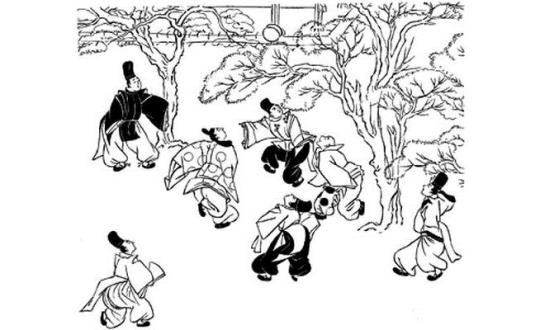
Members of the Asakai family were the instructors of kemari to the Ashikaga shōgun Yoshimasa and Yoshinao, and their courts. During the fifteenth century the Asakai also founded the Niraku school [二楽流] of calligraphy. Their fortunes seem to have declined in tandem with those of the Ashikaga house, so that they were remembered more for the scandal involving Masakata, than for other accomplishments during the sixteenth and seventeenth centuries.
¹Hino Terusuke [日野輝資; 1555 ~ 1623] was a scion of the hereditary court nobility (kuge [公卿]), who served in various governmental posts, ultimately being appointed Gon-dainagon [権大納言] (Supernumerary Grand Counselor of State) in 1597, at which time he was elevated to the senior grade of the Second Rank. He was thus the highest ranking among Rikyū's noble disciples.
Terusuke retired from government service in the Fifth Month of Keichō 12 [慶長十二年] (1607) and became nyūdō, taking the name Yuishin-in [唯心院]. Nevertheless, it seems that he remained a counselor to both Tokugawa Ieyasu and his son Hidetada until his death.
²Kayari [蚊遣] means mosquito repellent, and usually referred to burning pine-needles or dried mugwort (or an incense compounded from the latter) for this purpose. The practice had been employed at the Imperial Court since ancient times, but this occasion appears to have been the first time that it was used in the roji -- to rid the roji and koshi-kake of mosquitos during a chakai.
³Rikyū-koji ha, Hino Terusuke no montei ni natte, tsune ni mairare-keri [利休居士ハ、日野輝資ノ門弟ニ成テ、常ニ參ラレケリ].
Rikyū-koji ha [利休居士は] means concerning Rikyū-koji.
Koji [居士] was the “non-title” (meaning a Buddhist layman, or lay believer -- that is, a follower who had not formally taken the tonsure) that was bestowed on Rikyū in early 1586, so he could enter the Imperial Palace and assist* Hideyoshi’s service of tea to the Emperor Ōgimachi [正親町天皇; 1517 ~ 1593 -- his reign extended from the 27th day of the Tenth Month of Kōji 3 [弘治三年], 1557, to the 7th day of the Eleventh Month of Tenshō 14 [天正十四年], 1586] in Hideyoshi’s golden tearoom (which was set up on the deep veranda of one of the halls within the palace compound).
Hino Terusuke no montei ni natte [日野輝資の門弟になって]: this phrase is grammatically irregular; but the meaning seems to be that Hino Terusuke was one of Rikyū’s disciples†.
Tsune ni mairare-keri [常に參られけり] means that (he) frequently desired to visit‡ -- while this is usually understood to mean that Terusuke often visited Rikyū, the context of this entry implies that the visits between the two were reciprocal.
Here, and throughout the entire passage, he toku-shu shahon agrees exactly with the Enkaku-ji text**. ___________ *Despite occasional assertions to the contrary that are found in the popular tea histories, Rikyū’s job on this occasion was primarily to grind the tea, help prepare the utensils, and take care of various things that had to be done in the preparation area (such as emptying the koboshi, and returning it after cleaning, so Hideyoshi could replace it on the daisu), and sit in the vicinity of the sadō-guchi, ready to offer any advice that Hideyoshi might have needed. The surviving accounts suggest that the daisu-temae that Hideyoshi employed on this occasion used a bon-chaire and dai-temmoku, and everything used was either made of gold, or made of wood covered with gold (the temmoku was made in that way, since a gilded ceramic bowl would have been too heavy, and potentially could have been too hot to hold comfortably).
On this occasion, Rikyū did not meet the Emperor or serve him tea while Hideyoshi sat and chatted with the Emperor (the way some popular versions of the story suggest). Indeed, the Emperor would have been entirely unaware of Rikyū’s presence.
†Linguistically, the construction of this phrase seems to suggest that Rikyū became Lord Hino’s disciple, which is nonsense.
‡The suffix -keri [けり] might be interpreted to suggest that this was something that happened in the past, something that had already ceased to occur by the time that this text was written down.
And, indeed, as Lord Hino rose higher and higher in the government, he would have had correspondingly less time to indulge in things like chanoyu.
**As does the genpon text -- except that, as noted above, the genpon version inserts the name Asukai-dono [飛鳥井殿], Lord Asukai, in place of Hino Terusuke [日野輝資]: Rikyū-koji ha, Asukai-dono no montei ni natte, tsune ni mairare-keri [利休居士ハ、飛鳥井殿ノ門弟ニ成テ、常ニ參ラレケリ].
There does not seem to be any historical justification that might account for this change in the text, however, so it is difficult to imagine how the substitution came to be made by the editors of the genpon edition. Tanaka Senshō, however, argues that the reason for the name change was because of the Asakai family’s traditional connection with kemari (that was mentioned in the sub-note below my introduction). Because the Asakai were the national experts, the men of their family would have had to practice kemari out-of-doors throughout the year. During the summer months, because of the discomfort caused by mosquitoes (not only while playing, but also while resting between innings in the shade of the trees in the garden), they began to burn mosquito repellent in the garden to make their long practice sessions more endurable. Nevertheless, this does not give us any clues as to why Rikyū would have been visiting them, or why he would have been so deeply impressed by the idea of burning kayari in the garden.
⁴Natsu yū-gata, o-niwa no ko-kage ni kayari-bi wo tateraretari wo [夏ノ夕方、御庭ノ木陰ニ蚊遣火ヲタテラレタルヲ].
Natsu yū-gata [夏の夕方] means on an evening during the summer.
O-niwa [御庭]: the honorific o- [御] was probably used because Lord Hino was a member of the kuge [公卿], the hereditary court nobility, so the use of the polite form would indicate unambiguously that this garden was in his residence.
O-niwa no ko-kage ni kayari-bi wo tateraretari wo [御庭の木陰に蚊遣火を立てられたるを] means that in (Lord Hino’s) garden, in the shade of the trees*, a kayari-bi [蚊遣火]† was set up.
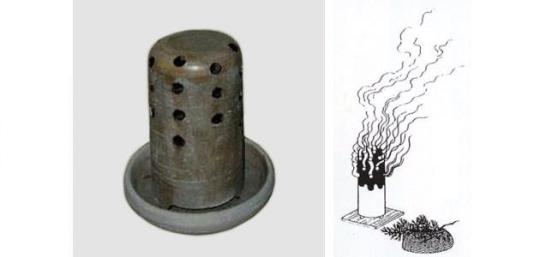
A kayari-bi was an openwork (usually ceramic) brazier (an Edo-period example of a kayari-bi that was made to be set on the floor of a room is shown above) in which either dried pine-needles, or stalks of dried mugwort (Artemisia princeps, and possibly other species)‡, were set to smoldering, since the smoke from these plants had mosquito-repelling properties.
However, by the point in the Edo period when this text was written, mosquito-repellent incense sticks (katori-senkō [蚊取線香]**), made from crushed mugwort mixed with charcoal powder, also seem to have been invented, so this entry could be referring to either form of kayari.
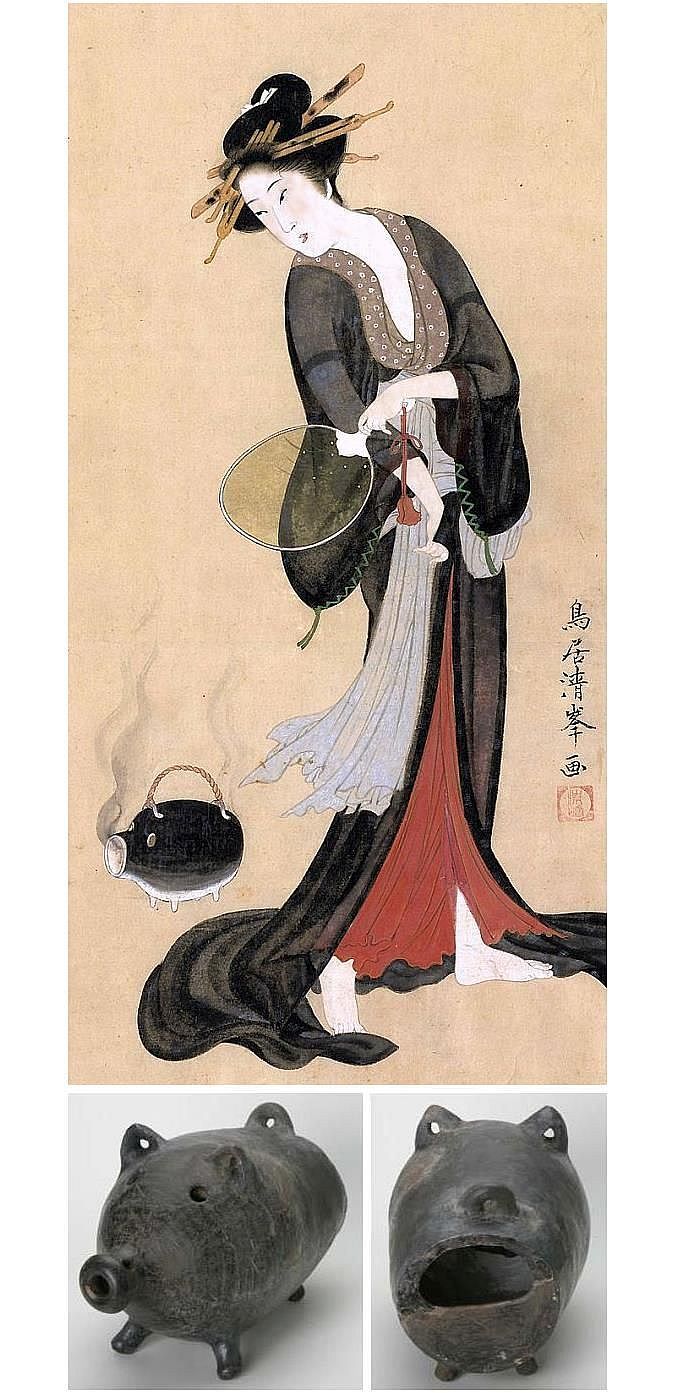
The above painting, titled Kayari-bijin [蚊遣美人] (“a Beauty with a kayari-bi”), by Torii Kiyomine [鳥居清峯; 1836 ~ 1867] shows how a handle was attached to another Edo-period example of a katori-bi (an antique example is shown below the painting -- the pine-needles, stalks of mugwort, or a coil of mosquito incense, would be placed inside through the large hole in the back side of the kayari-bi). The handle was used to carry the kayari-bi from place to place, as needed, to keep the mosquitos away††. __________ *Since the gathering during which this kayari-bi was set up in the roji was held in the evening, the shade from the trees is probably less important to the story than the fact that the kayari-bi was placed somewhere where it would not be seen. The purpose was, of course, to chase away the mosquitoes and other night insects from the vicinity of the koshi-kake and roji.
†With respect to this use of a kayari-bi in the roji, Tanaka Senshō comments:
Kayari de naku, eji-kago tote, niwa no tsūro ni kō wo taku-koto ha ko-rai aru. Ka no dō no tsuru ya, kamo nado wo tei-jō ni oite kō wo taku-koto ha, ko-rai okonawareta-koto de aru. Kono-koto kara, kayari wo omoi-tsuita no de arau ka. Roji ni kayari wo tateta-koto ha, mukashi to shite omoshiroi shu-mi de aru. Ima-doki ha, ryōri-ya no teien ni, katori-senkō ga takarete-iru ga, kore ha fūryū to ha ienu. Yahari, eji-kago nado suete, mukashi-fū no kayari-bi no kata ga omoshiroi to omou
[蚊遣でなく、衛士籠とて、庭の通路に香を炷く事は古来ある。彼の銅の鶴や、鴨抔を庭上に置いて香を炷く事は、古来行われた事である。此事から、蚊遣を思ひ付いたのであらうか。露地に蚊遣を立てた事は、昔として面白い趣味である。今時は、料理屋の庭園に、蚊取線香が炷かれているが、是は風流とは云ヘぬ。やはり、衛士籠抔据ゑて、昔風の蚊遣り火の方が面白いと思ふ].
“In the absence of a kayari, since ancient times it has been the practice that even [something like] an eji-kago [衛士籠] might be set up beside the garden path and used for burning incense. As for placing bronze cranes and ducks and the like in the garden for burning incense [to perfume the air], this has been done since ancient times. Perhaps this was how they came up with the idea of [burning] kayari? Setting up the kayari in the roji must have been a interesting way to amuse [oneself] in bygone days. Nowadays, katori-senkō is burned in the gardens of restaurants, but [I don’t] think this can be called tasteful. I think it would be much more interesting to set up an eji-kago and make use of this old-fashioned way of repelling mosquitos!”
An eji-kago [衛士籠] (the name means a sentry’s/gatekeeper’s basket -- by the light of which the guard was able to identify people approaching the gate for admittance) was (originally) an iron basket, suspended from or on some sort of stand or tripod (as can be seen below), in which wood was kindled for illumination. This arrangement was also referred to as a kagari-bi [篝火] -- as in the following Edo period illustration for chapter 54 of the Genji monogatari [源氏物語] (which sets the scene on a veranda whose garden is illuminated in this way). In the picture we see a line of kagari-bi (often translated as “flares”) set up along the bank of the garden stream, with the fires attended by underlings.
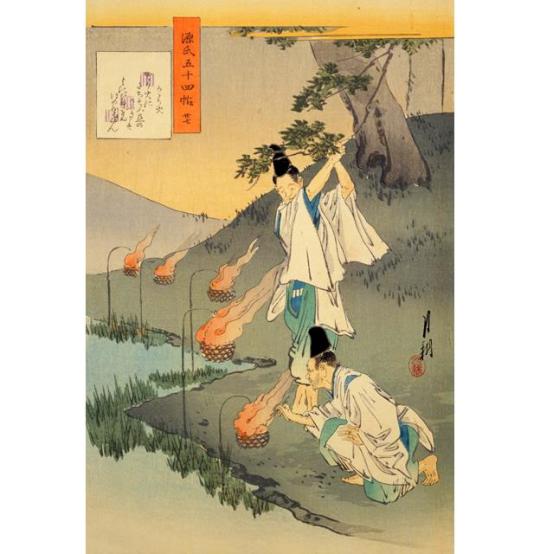
Here, it is unclear whether Tanaka believed that the smoke from the fire in the kagari-bi would be sufficient to drive the mosquitoes away, or whether he is using the word eji-kago to refer to a similar sort of arrangement -- albeit one in which pine needles or mugwort, or some other special material, would be burned in similar manner to produce the desired fumigatory or mosquito-repelling effect.
The reference that he makes to bronze cranes and ducks installed in the garden is either addressing the matter of the supports from which the containers of smoldering incense (usually crushed jin-kō [沈香] or kyara [伽羅], or blends based on these) were suspended (the bowls were taken in when incense was not being burned, leaving the bronze statues standing in the garden as decorative objects in their own right), or to bronze censors cast in these shapes (such as the one shown below) that were set out in the garden to perfume the air.

It might be added that most of the oldest tsuri-bune [釣り船] imported from Mogul India and China were originally made as hanging incense burners.
‡This plant is called yomogi [よもぎ = 蓬) in Japanese, and ssuk [쑥] in Korea. In addition to its mosquito-repellent qualities (in Korea, the plant was traditionally cultivated along the edge of the veranda, since even when living the essential oils volatilize into the air, deterring mosquitos; and in the autumn the stalks were cut down to the ground, and then suspended upside-down under the eves to dry for use as a kayari (fumigant) the next year). Mugwort is also used in both country’s cuisine; in Korea, it is also used in certain varieties of traditional sweets (though strongly-flavored sweets of this kind fell out of favor in Japan early in the 20th century -- when the preference shifted to tastes that would best appeal to young women). Mugwort is also used in the traditional medicine of both countries (and the mugwort-flavored sweets were just one example).
**While originally produced as straight incense sticks, the coil version of katori-senkō seems to have appeared during the Edo period as well -- allowing for a longer-burning piece of incense that was not spatially limited as a linear stick would have been.
††The fact that the roji is watered so frequently means that mosquitoes are an inevitable menace from late spring to deep autumn, where they usually attack the participants at the exposed strip of skin between the edge of the tabi and the hem of one’s kimono -- a sensitive area where their bite is horribly annoying (especially in Japan, where the custom is to avoid touching the feet and ankles as much as possible, so the brief relief of scratching is completely out of the question).
⁵Kyū mite, sasuga ni fūryū-no-koto kana to kanshin-shi [休見テ、サスガニ風流ノコトかナト感心シ].
Kyū mite [休見て] means (and) when Rikyū saw this...
Sasuga ni fūryū* no koto kana [流石に風流のことかな] means “indeed, isn’t that most tasteful!” These words were supposed to have been murmured by Rikyū when he noticed the faint tendrils of smoke trailing through the plantings†.
To kanshin-shi [と感心し] means as he was deeply moved (by the sight). ___________ *The expression fūryū [風流], especially as it is being used here, did not enter the lexicon of the chajin until the Edo period (indeed, fūryū was, culturally, a very important and popular way of describing moving, tasteful, and “artistic” experiences from the second half of the seventeenth century onward). This helps us understand that this text, while possibly based on a real incident -- the first time that a kayari-bi was used during a tea gathering to keep the roji and koshi-kake free of insects during night gatherings in the summer -- could not have been written until the late seventeenth century.
†Perhaps it initially reminded him of the smoke of the burning pine needles that trailed through the pine trees during the fusube-chanoyu [ 燻べ 茶の湯] that Rikyū had created for Hideyoshi as a way to enjoy chanoyu even in the pine barrens at Daizen-ji and Hakozaki, during the Kyūshū campaign of 1586~7.
See the post entitled Nampō Roku, Book 7 (66): Fusube-chanoyu [フスベ茶湯] – a Tea Gathering Held Out-of-doors for further details. The URL is:
https://chanoyu-to-wa.tumblr.com/post/726511147567775744/namp%C5%8D-roku-book-7-66-fusube-chanoyu-%E3%83%95%E3%82%B9%E3%83%99%E8%8C%B6%E6%B9%AF
⁶Sono ato, roji・koshikake no atari, ko-kage no shikaru-beki-tokoro ni, kayari wo takare-shi-koto ari [其後、露地・腰カケノアタリ、木陰ノシカルベキ所ニ、カヤリヲタカレシコトアリ].
Sono ato [その後] means after that, later on, afterward.
The implication is that this gathering, hosted by Hino Terusuke, was the first occasion on which a kayari-bi had been used, secreted under the trees to clear the area of noxious insects during the chakai. The realization of how useful this would be is why Rikyū is made to be so impressed and moved -- because he had never though of doing something like that himself*.
Roji・koshikake no atari [露地腰掛の當り] means in an out-of-the-way place in the roji and koshi-kake; on the edge of the roji and koshi-kake.
Ko-kage no shikaru-beki-tokoro ni [木陰の然るべき所に]: ko-kage [木陰], as above, means in the shade of the trees (in other words, in an inobvious place under the trees that were planted to obscure the fences that enclose the roji from view); shikaru-beki-tokoro ni [然るべき所に] means in a suitable place, in the right place.
Kayari wo takare-shi-koto ari [蚊遣を薫かれしことあり] means the fumigant† should be set to smoldering‡ (in the shade under the trees). __________ *It appears that the burning of kayari originated with, and was largely restricted to, the Imperial Court -- with kayari-bi set up in obscure corners of the various ceremonial and audience halls, to eliminate mosquitoes that would have disrupted the proceedings (since mosquitoes remain active even during the daytime in such large, and dark, spaces, and court ceremonials and audiences could carry on for hours without a break).
†Kayari [蚊遣] -- without the -bi [火] -- means a fumigant or mosquito repellent; however, this short form was also used informally as a way to refer to the kayari-bi, as a self-contained unit, so either interpretation would be correct.
‡This particular verb, takareru [薫かれる], is used specifically to mean to “burn” something like incense -- not with an active flame, but so that it smolders slowly.
==============================================
◎ If these translations are valuable to you, please consider donating to support this work. Donations from the readers are the only source of income for the translator. Please use the following link:
https://PayPal.Me/chanoyutowa
2 notes
·
View notes
Photo


Trigger Good Night Acrylic Strap Vol.1/Vol.2 Remember when I said I couldn’t find it promisinininining got me! Thank you again also I had it queued but my dummy head put it for February so you get two post today! ALSO LOOK AT them sleepy lil babies also im sure hyuse is gonna get breathing problems in the future lol.
#World Trigger#ワールドトリガー#jin yuichi#kohei izumi#arashiyama jun#ikoma tatsuhito#nasu reí#oki koji#kuga yuma#hyuse khronin#soya kazama#kageura masato#arafune tetsuji#murakami kou
50 notes
·
View notes
Photo


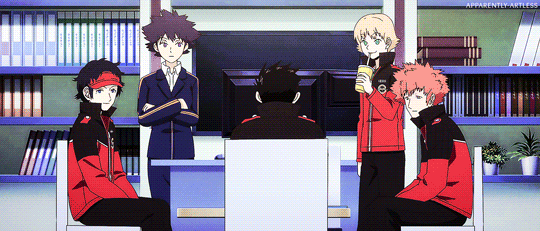

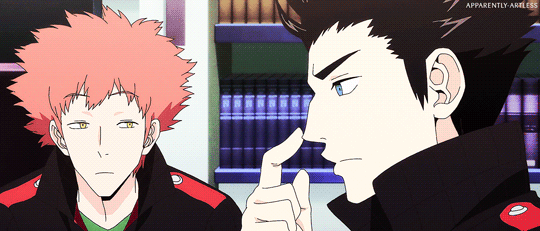
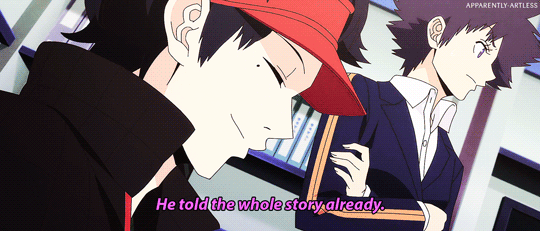
World Trigger S3E11 - Ikoma Squad
Bonus: Ikoma breaking 4th wall

#world trigger#world trigger season 3#ikoma squad#ikoma tatsuhito#oki koji#mizukami satoshi#minamisawa kai#hosoi maori#wtedit#wtgraphics#fyanimegifs#fyanimanga#animanga#artless#i really love ikoma#i also love how ikoma squad always deviate from actual planning and just talk about random stuff
141 notes
·
View notes
Text
I am friends to all cats. Yes, even the mean ones. They have their reasons.
- Oki Koji, at some point
9 notes
·
View notes
Video
tumblr
Ninomiya's Composite Bullets & Tsuji's Kogetsu
25 notes
·
View notes
Text
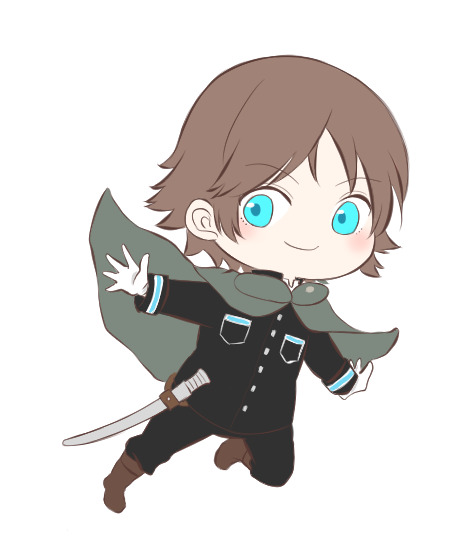

33 notes
·
View notes
Text
⚠️minor manga spoilers for the B-rank wars⚠️
Rating Border Combatants’ Uniforms B-Rank Edition (Part 1):
Ninomiya Squad: B-Rank 001
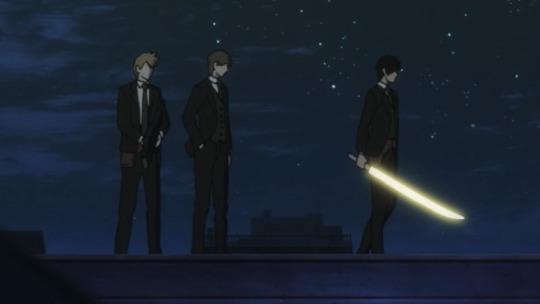

If pretentiousness was a Border squad uniform this would be it. Just the fact that Ninomiya chose this makes me want to slap him. Absolutely horrible. One of the worst things I’ve ever seen. Why would someone choose a suit for this line of work? Ninomiya should be wearing face paint and a wig because he looks like a fucking clown. -1/10
Tamakoma-2: B-Rank 002
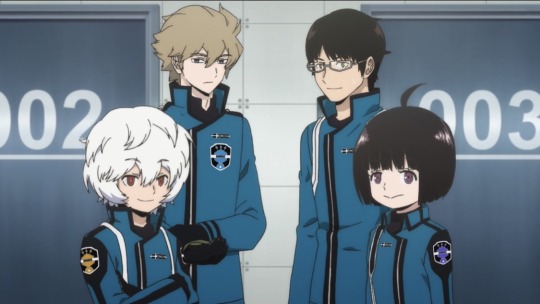
So cute. I love the color and I love that everyone’s jacket is a lil but different. I wouldn’t expect Osamu to have good fashion sense, but he did a very good job here. 10/10.
Kageura Squad: B-Rank 003
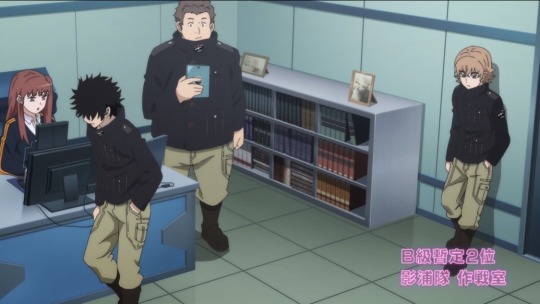
I like the high collars. They all look super adorable. But I wish the pants were a different color. Maybe black or gray. The boots are great. 7/10.
Ikoma Squad: B-Rank 004

On its own, this isn’t my favorite design, but it looks really good on everyone here. You know when a baby is wearing footie pajamas and you hold them and they’re just so snugly and cute? Yeah, that’s the vibes this gives me. Just look at Koji’s visor! He’s so baby. 8/10.
Oji Squad: B-Rank 005

What are they? The captains of a yacht? This look is absolutely ridiculous and makes me angry for some reason. Why the color on the wrists? Why the white gloves? So many horrible decisions went into the design of this outfit. 2/10.
Azuma Squad: B-Rank 006

It’s not the worst, it’s not the best. I don’t like that the headphones don’t match the jacket. I feel like the color looks weird with everyone’s hair. Especially Azuma’s. Hmm 5/10.
Part 2
#ninomiya squad#ninomiya masataka#tsuji shinnosuke#inukai sumiharu#tamakoma second#mikumo osamu#amatori chika#hyuse#kuga yuma#kageura squad#kageura masato#kitazoe hiro#yuzuru ema#ikoma squad#ikoma tatsuhito#oki koji#mizukami satoshi#minamisawa kai#oji squad#oji kazuaki#kashio yutaka#kurauchi kazuki#Azuma squad#Azuma haruaki#kaorai noboru#okudera tsuneyuki#world trigger#wt
35 notes
·
View notes